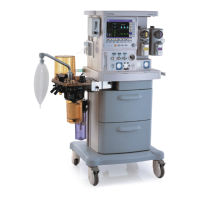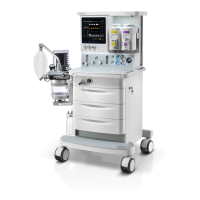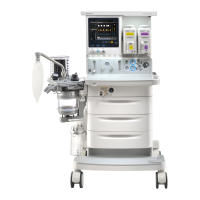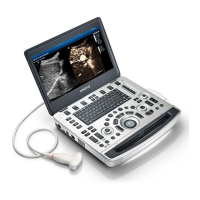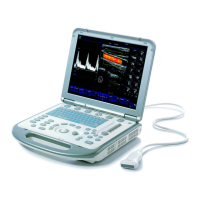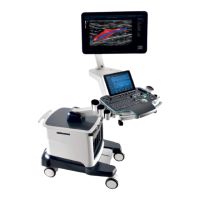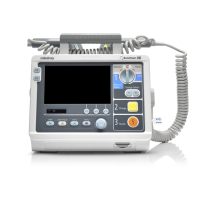6-20
3. Select PCV as the ventilation mode.
4. Adjust total amount of fresh gas to 0.5 L/min.
5. Set the following combinations of Pinsp, Rate and PEEP respectively: (10 cmH2O, 15
BPM, OFF), (15 cmH2O, 12 BPM, 5 cmH2O), (20 cmH2O, 10 BPM, 8 cmH2O). Set
others to the defaults. Record the displayed Ppeak and PEEP values, and maximum and
minimum readings on the airway pressure gauge in each setting stabilized status
6. Judge if the above measured data meet the following conditions:
Pressure control and measurement are normal: the displayed Ppeak value should be
within the range of Pinsp setting ±2 cmH2O.
Circuit leak is within the acceptable range: the folding bag can reach the top of the
bellows housing each time.
Pressure measurement is normal: in one breathing cycle, the Ppeak measured value
should be close to the maximum reading on the airway pressure gauge (with error
not exceeding 2 cmH2O) and the displayed PEEP value close to the minimum
reading on the airway pressure gauge (with error not exceeding 1 cmH2O).
No other ventilation failure occurs: the Paw and flow waveforms are displayed
normally and no technical alarms occur.
If the above test requirements are not met, perform subsequent checks and do the test again.
NOTE
If any errors are detected during PCV test, perform subsequent checks and do the
test again until the errors are corrected.
6.6.2 Breathing System Leak Test in Mechanical Ventilation
Mode
This test is to check if the mechanical ventilation pneumatic circuit has leaks, including the
bellows, drive gas circuit, sodalime canister, patient tubing, flow sensor and their connections.
For details, refer to 4.3.1 Automatic Circuit Leak and Compliance Test.
6.6.3 Breathing System Leak Test in Manual Ventilation Mode
This test is to check if the manual ventilation pneumatic circuit has leaks, including the APL valve,
check valve, sodalime canister, patient tubing, flow sensor and their connections.
For details, refer to 4.3.2 Manual Circuit Leak Test.

